 If you buy a new doorknob to replace the one on your 100-year-old front door, it will stand
out as different. When the interior shank on this one broke a few years ago, I had to find a metal worker who would make a
new one for me, to the exact specifications. (The key-lock here is newer, and looks it.)
If you buy a new doorknob to replace the one on your 100-year-old front door, it will stand
out as different. When the interior shank on this one broke a few years ago, I had to find a metal worker who would make a
new one for me, to the exact specifications. (The key-lock here is newer, and looks it.)
 Standard lattice work at the big box stores looks cheap and flimsy next to the substantial
lattice that was pulled away from my back porch in a storm two years ago. I had to re-create the old style lattice from 2x6 lumber.
Standard lattice work at the big box stores looks cheap and flimsy next to the substantial
lattice that was pulled away from my back porch in a storm two years ago. I had to re-create the old style lattice from 2x6 lumber.
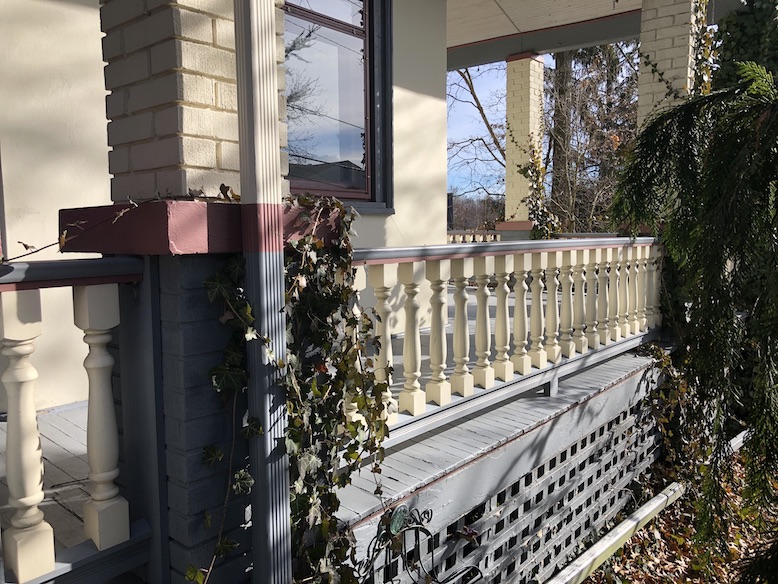 And what’s an old house without a wrap-around porch? What do you do when you need to replace the railing? And especially,
the balusters? I found my solution at Vintage Woodworks about 15 years ago.
And what’s an old house without a wrap-around porch? What do you do when you need to replace the railing? And especially,
the balusters? I found my solution at Vintage Woodworks about 15 years ago.
All of these past repairs were on my mind last summer (2019) when I took on the project of repairing my front steps. You can see in the “before” photo below that the mortar in the brick risers (the vertical part of a step) had been failing for many years, causing the steps to sag. When I moved into the house 20 years ago, I caulked all the open gaps I could find and you can see that caulk failing in the photo too, so water was definitely contributing to the problem overall. So the job was to pull off the stone treads (the part you step on), replace the brick risers, level the treads again with sand and gravel, and mortar everywhere to drain the water appropriately.
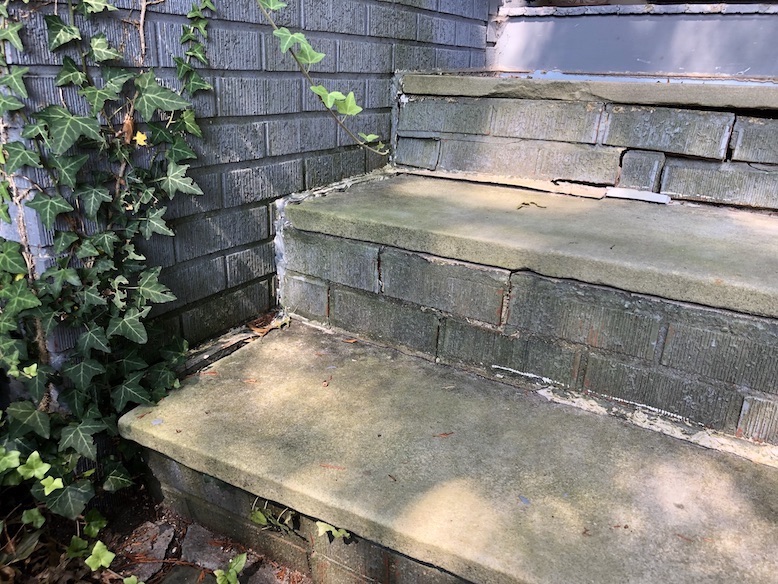 A close up view of the steps requiring repair. More can be seen in the header image at the top of this post.
A close up view of the steps requiring repair. More can be seen in the header image at the top of this post.
The first challenge was finding a brick that would match the surrounding bricks. You can see that there is a vertical etching on the bricks that would not seem too unique, yet, the big box stores definitely did not have a match. Fortunately, I came across Donley Brick and they had a wide selection, including the one I needed (in stock!). They were only about 50 cents each and I bought 80 of them if I recall.
I really don’t know anything about laying bricks and mortaring, and this post is not intended to teach anyone anything about those topics. There are enough videos on YouTube to prove that those are skills that can take a lifetime to acquire and perfect. I watched many hours of videos and did the best I could.
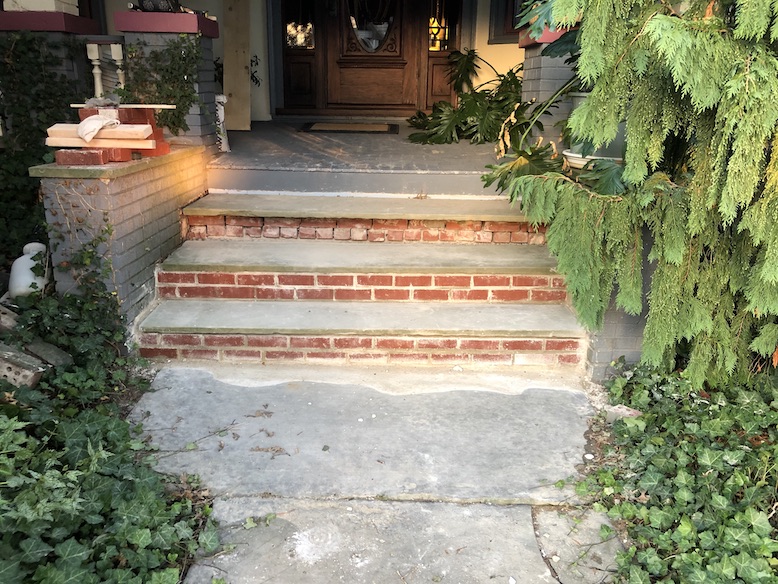 In this photo, the two bottom steps are done. I still need to remove the top stone and lay the two rows of bricks in front
of the bricks you can see in the photo.
In this photo, the two bottom steps are done. I still need to remove the top stone and lay the two rows of bricks in front
of the bricks you can see in the photo.
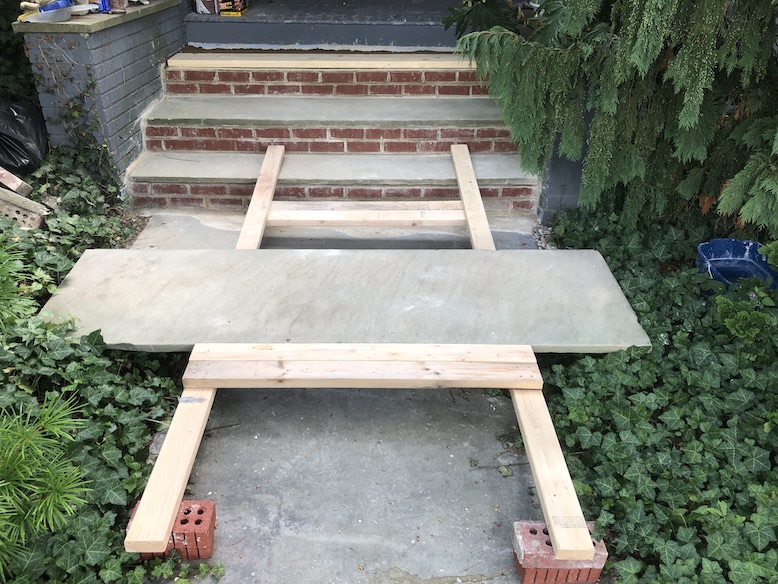 Here the new brick risers for the top step are in place and I need to replace the stone. The stones were very heavy
so I built this sled to let gravity do some of the work getting them up and down. It was still a bit tricky.
Here the new brick risers for the top step are in place and I need to replace the stone. The stones were very heavy
so I built this sled to let gravity do some of the work getting them up and down. It was still a bit tricky.
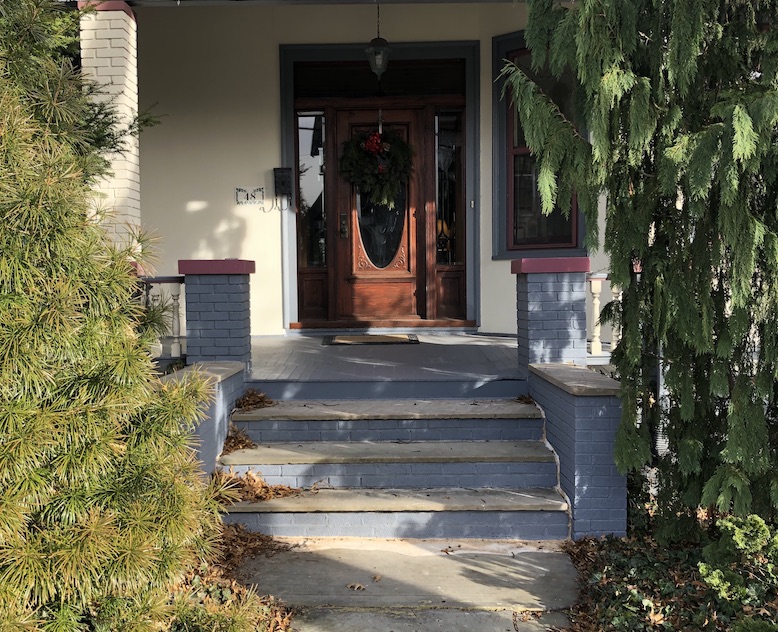 The finished project. Hopefully, the steps look in good repair but not "new." Photo taken January 9, 2019.
The finished project. Hopefully, the steps look in good repair but not "new." Photo taken January 9, 2019.
Of course there are things I don't like about how these turned out. The mortar on the sides of the treads, and at the foot of the stairs, does look new and therefore stands out. If I knew more about what I was doing I could have tinted or colored that in some way. And I wish I'd found a way to clean the stone treads better. They are stained from years of mildew but when I tried to pressure wash them, the soft stone started gouging away. So I left them pretty much as is. It's good that they look old; bad that they look damaged or stained.
It's often said that good design is invisible. The design seems natural, as if to say, how else would you do it? This applies to home improvement projects too. You don't really want someone driving by and thinking, hey, new roof! You want the newness to melt away into the character of the house, and thereby achieve invisibility. In this way every home improvement project, especially with old houses, is also a design project.